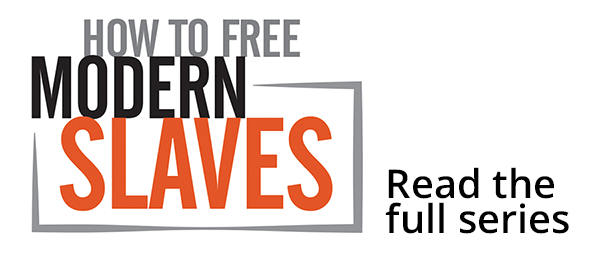What is human trafficking?
Loading...
Human trafficking, as defined by a US federal law in 2000, is “the recruitment, harboring, transportation, provision, or obtaining of a person for labor or services, through the use of force, fraud, or coercion for the purpose of subjection to involuntary servitude, peonage, debt bondage, or slavery.” That’s the definition for labor trafficking; a parallel definition applies to sex trafficking and coerced prostitution.
Note that in this definition, a trafficking victim is not necessarily moved from one location to another. Human trafficking is not a form of smuggling. A person could be smuggled across a border without being trafficked – for example, a migrant paying a coyote to escort them over the US-Mexican border – and a person could be trafficked without ever leaving her home city.
But the coercion at the heart of human trafficking often is connected to migration. Job seekers arrive in a new country on promises of a rewarding work, but their supposed helpers confiscate their paperwork and force them into service. Then there’s coercion in the form of “debt bondage,” such as when victims incur an initial debt as a term of employment – and traffickers use that debt as a means of control.
The United Nations has called on nations to adopt strong laws criminalizing human trafficking in its many forms – whether victims are children, women, or men. So far, some 168 countries have signed on to the UN protocol, launched in 2000. Laws on human trafficking vary in strength from country to country (and state to state within the US), and enforcement can be weak. Advocacy groups say there have been relatively few human trafficking convictions worldwide.
The UN definition of human trafficking is similar in key respects to the one adopted by the US. It boils down to three parts – a “what,” a “how,” and a “why.” What happens. Human trafficking involves one or more of these actions: “the recruitment, transportation, transfer, harbouring or receipt of persons.” The means. Criminals act by coercion (including threat or use of force), by abduction, by fraud or deception, by “the abuse of power or of a position of vulnerability,” or by paying money “to achieve the consent of a person having control over another person.” The motives. The criminal intent is exploitation, meaning “prostitution … or other forms of sexual exploitation, forced labour or services, slavery or practices similar to slavery, servitude or the removal of organs.”
One question that arises is whether or not someone can be considered a trafficking victim if he or she is an adult who gave initial consent to an exploitative labor arrangement. The answer under US law, and the UN protocol, is yes because it is the behavior of the traffickers that determines the crime, not the consent of the victim. As a US State Department document puts it: “Once a person’s labor is exploited [by coercion], the person’s prior consent to work for an employer is legally irrelevant.”







